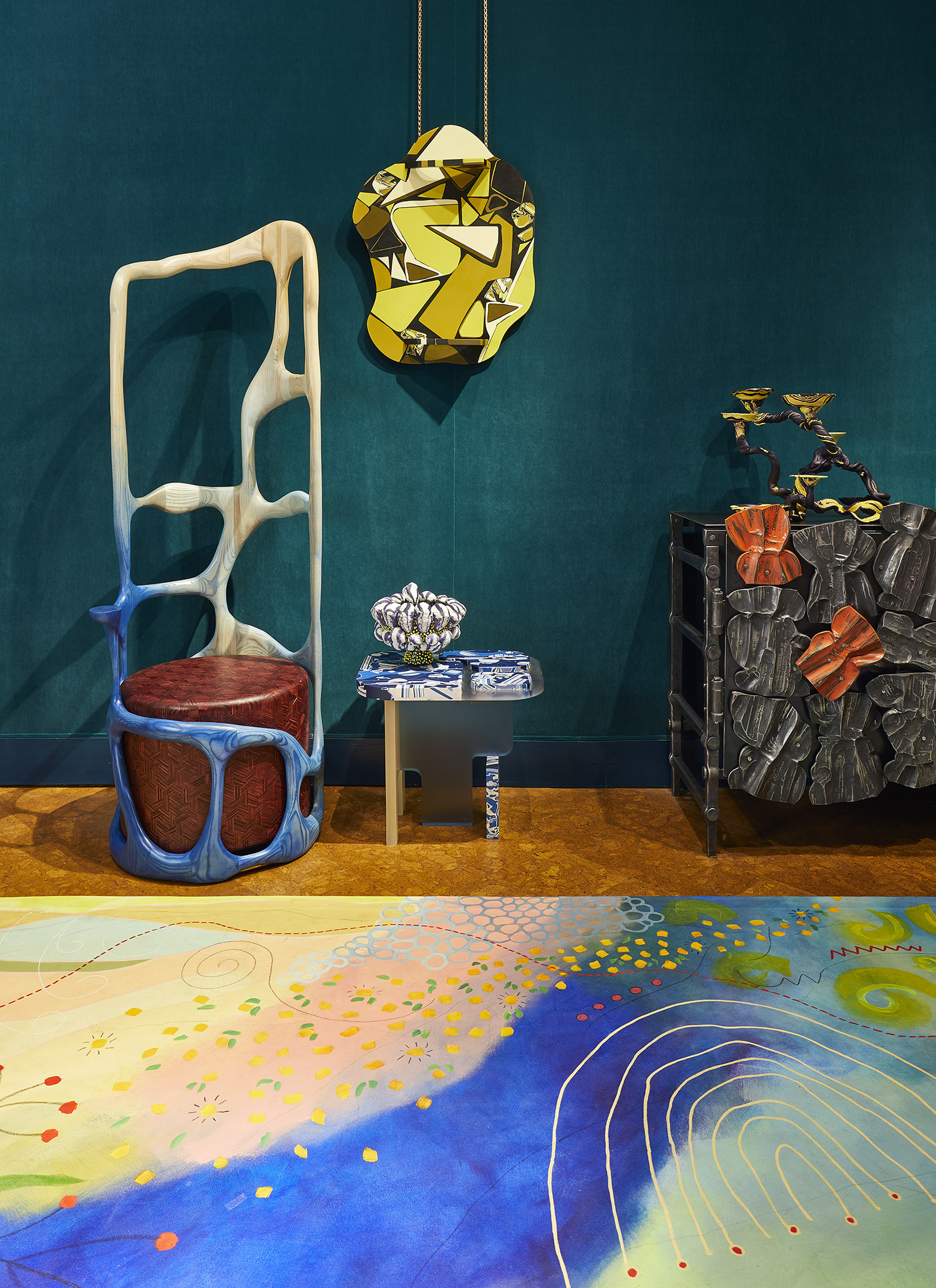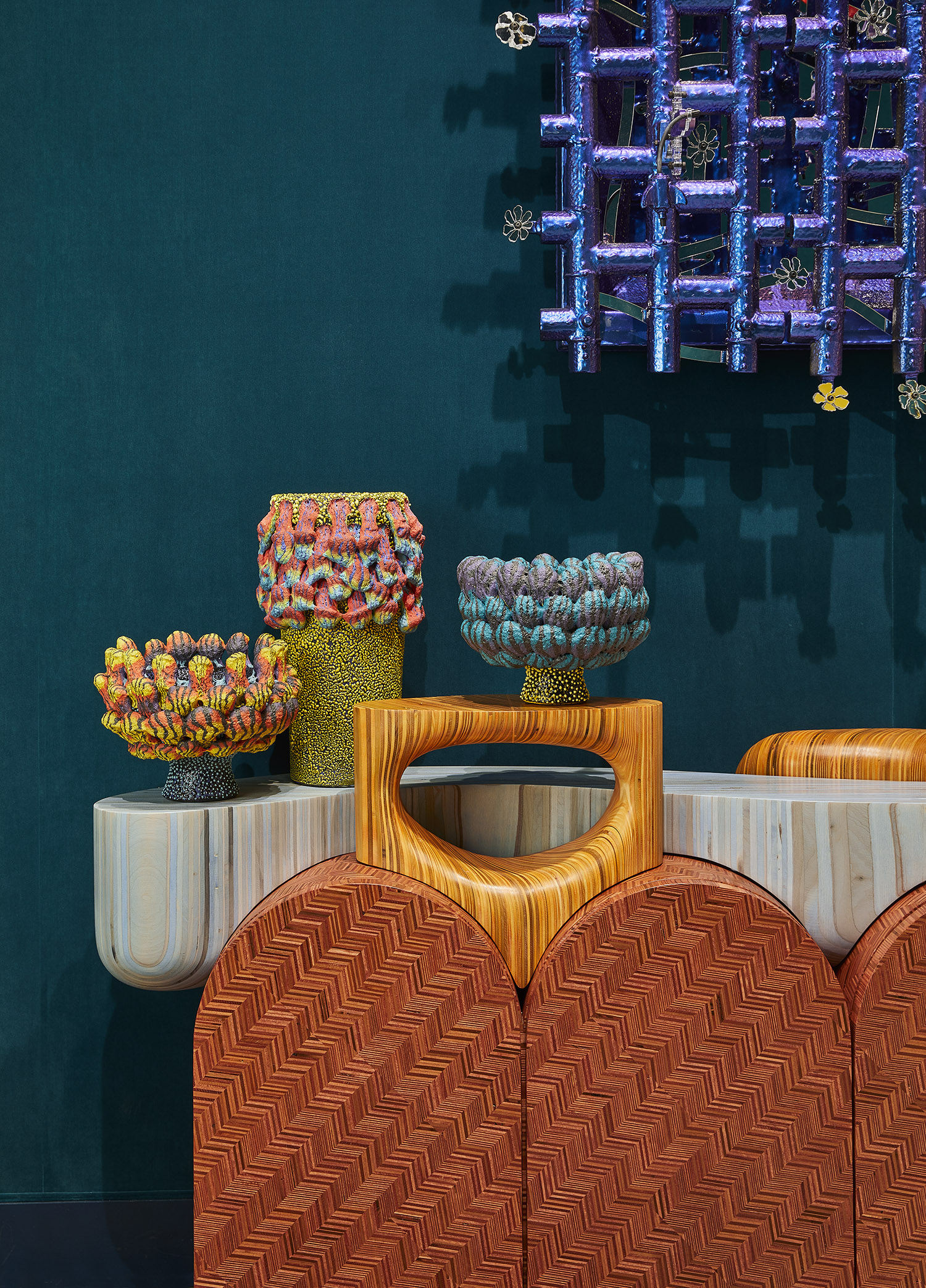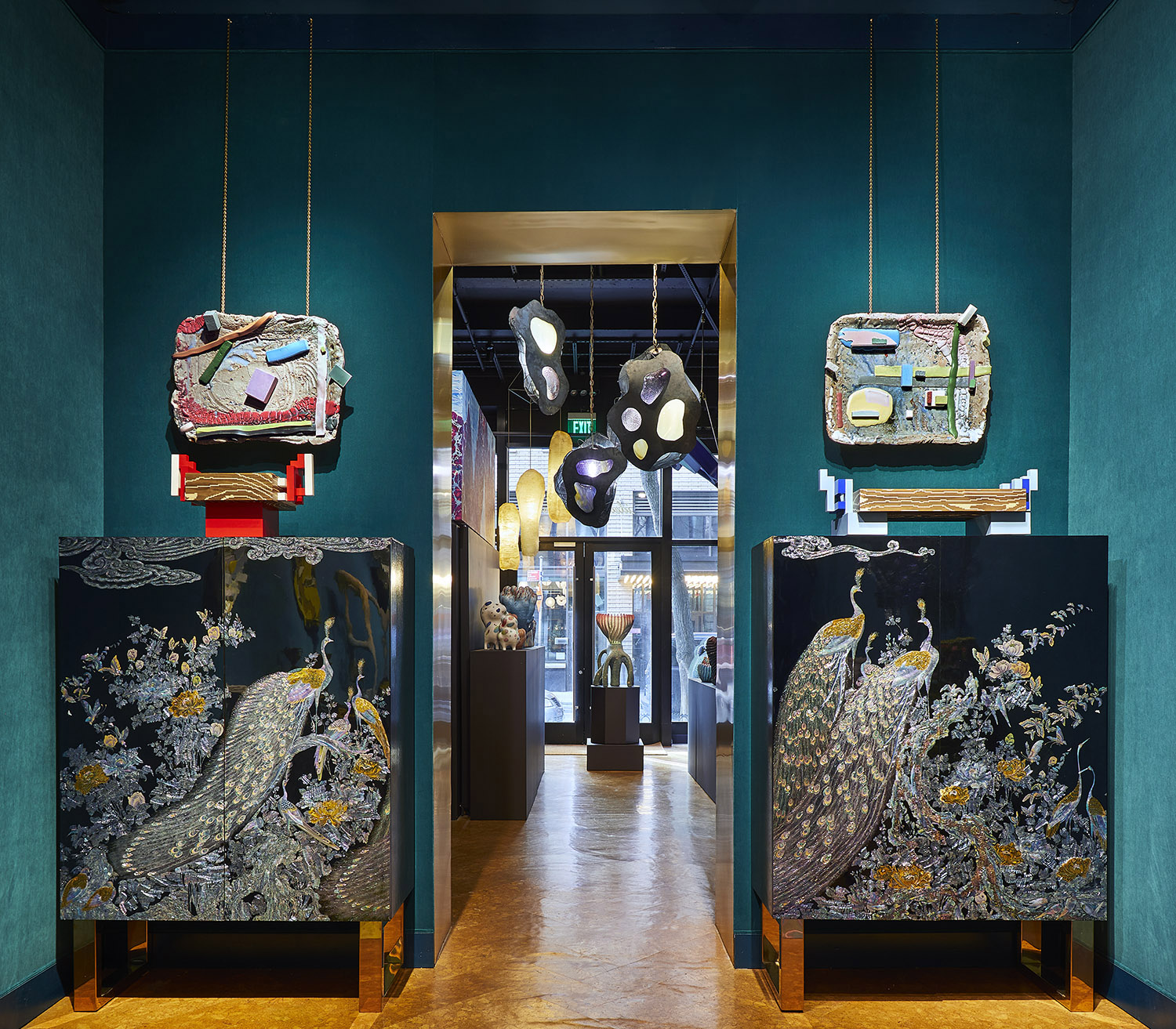Hyper-Materiality
| March 22 - June 10, 2023 |

We are perpetually imagining ways to change the world to suit us. The manipulation of matter is what we do, and we do it with our minds, manifest through the agency of our hands. Our dedicated focus of this pursuit produces processes, techniques, and results that are as fantastical as a particle accelerator like the Large Hadron Collider, a 27-kilometer-long tunnel, 175 meters underground, smashing particles less than a quadrillionth of a meter in size at just under the speed of light to probe the nature of physical reality. For significantly less than the cost of five billion dollars, artists directly, explicitly, and exclusively engage with this same pursuit, and they do it symbolically; they shape matter to discover and convey ideas and values. The artists in this exhibition engage in sophisticated manipulation of materials on an intimate and understandable scale using fundamental strategies for creating results are as deducible as they are visually inspiring. What could be more intrinsically understandable than a pattern that illustrates what it is made from? NJ Roseti uses the traditional wood marquetry process to create self-referential stylized patterns of wood grain. Dissecting and recombining wood veneers into what is essentially wafer-thin jigsaw puzzles, NJ applies these rich surfaces unironically to mass produced plywood bodies. Plywood itself is a laminated layered composite of wood and wood pieces, made from sliced rotary cut logs - unraveled trees glued back together! This radical reconfiguration or reconstitution of raw material on both an industrial and a skilled hand-worked level is both subject and material in NJ’s elegant fractal-logic process. Pushing plastic, our newest material, to its creative limits, both Elyse Graham and Daniel Wiener have developed exquisitely refined and elaborately evolved variations of traditional processes for manipulating their material. Daniel works a two-part epoxy clay by hand in its soft form, using chemical extenders to prolong working time, combined with silicone molds created from casting forms sculpted first from a more forgiving medium. While all his materials are advanced synthetics, they are commercially available, if esoteric. Once hardened, he further refines is soft sculpted work with traditional hard sculpting power tools. Elyse formulates her plastics from custom mixed and hand-colored batches. Her casting process often involves multiple molds and jigs that are repositioned throughout the process. Cast pieces are cut, reassembled and then re-cast into larger castings in a process that could be described as terrazzo-within-terazzo-within-terazzo; or as Elyse simply calls it, “Metamaterial”. The cast material itself is then also hard-worked by cutting and otherwise shaping into new forms that are again combined and assembled.
|

Ceramics is many millennia old, humankind has been shaping and hardening what is essentially mud, for over twenty-four thousand years, yet Alex Zablocki and Cory Brown are reinventing ways to shape it and explore its materiality. Alex takes the basic approach of challenging the assumed roles of the materials and the processes used to manipulate them. Glaze is a type of glass, a vitrifying layer that is traditionally painted or coated onto fired clay to apply an impermeable, cleanable, and watertight surface. To reveal the material properties of the glaze, Alex upends our expectations by casting it into bricks and strips that he assembles on and around his clay pieces and then fires only enough to bond to the body. To the clay itself, he adds an unusually pronounced ‘grog’ (mineral granules) and crushed clay to enhance texture and draw attention to the clay body. Alex then shapes the wet clay in similarly irreverent ways, for example coil-building onto molds where one might be typically expected to throw on the wheel. His demonstratively deconstructive approach is marvelously illuminating, leaving the broad strokes of his process visually accessible in the artefact of his finished work. In contrast, Cory Brown is an alchemist of glaze, creating truly eye-popping effects with new formulations and processes. The work exhibited here for the first time blurs the line between clay and glaze. The foaming nerikomi glaze is shaped much like clay into constructed patterned rolls that a layman might liken to a log cake. Layers of different colors are combined, cut, and recombined to form a sausage with a patterned core. Slices are then cut from the roll and placed on the clay form. Upon firing, the medallions foam into patterned puffs of color. Suspending the vessel upside down while firing allows this foam to expand beyond the rim and encase the entire vessel in a frothy vitreous shell. It is as spectacular as it sounds. Even following on the heals of freakish foaming glazes it may seem odd to equate wood with cheese, but Trey Jones and Tessa Silva use those materials respectively and share a strategic approach of repurposing, with environmental motivation, that draws them together. Trey has borrowed from ceramics the concept of nerikomi-style constructed patterns, but instead of clay he uses scraps of waste wood that he recombines through stack lamination of precisely cut and elaborately assembled fragments (off-cuts) normally discarded in the woodworking process. In woodworking, the stack lamination process was made famous by Wendell Castle in service of of creating relatively affordable and massive blocks of wood from which to reductively sculpt his forms. Salvaging and strategically recombining small fragments introduces into the process a unique opportunity to exploit the pattern that naturally occurs on the butt end of offcut pieces while also diverting high quality material from the waste stream. In the wildly different material that is a plaster-like cheese or cheese-like plaster, Tessa has also applied the strategy of repurposing waste material, in this case waste skim milk that is a byproduct of an organic dairy farm’s butter-making process. Combining this milk with waste chalk powder from mining, results in a material originally used to surface floors as early as the 1300’s in England. Long out of favor, and doubtless even obscure in its own time, Tessa has rediscovered this material and repurposed it for casting from, using a similar process to cheese-making, pouring the liquid slurry into cloth molds. Sealed with soft carnauba and bees wax (like cheese), this material gains new purpose and while the process suggest new and surreal amoeboid forms. Her fresh work retains a light, if pleasantly funky aroma Fortunately for us, all this knowledge lays safely locked into the work in this exhibition. One need not read this essay, but only carefully observe and deduce from the stunning work itself. In doing so, one will see that simple strategies, executed expertly, can produce spectacular results; recombine, reconfigure, reconstitute, refine, reinvent, repurpose. - Damon Crain Exhibiting work by: Alex Zablocki, USA (MI) |

